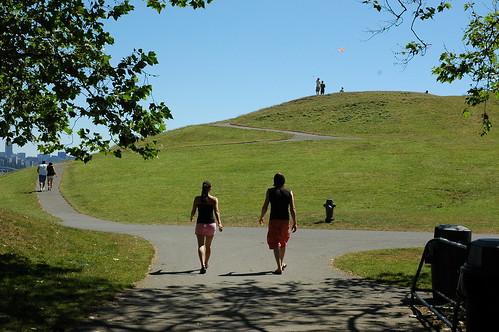The older population (which does not include me yet!), persons 65 years or older, totaled 39.6 million in 2009 (the latest year for which data is available). They represented 12.9% of the U.S. population, about one in every eight Americans. By 2030, there will be about 72.1 million older persons, more than twice their number in 2000. People 65+ represented 12.4% of the population in the year 2000 but are expected to grow to be 19% of the population by 2030.
 Over the last several years, dozens of studies have concluded that exercise helps not only your reflection in the mirror but also your cognitive ability. Just in the last four months, three research projects, one small, one medium and one large, reported their findings of the effects of exercise on the older brain.
Over the last several years, dozens of studies have concluded that exercise helps not only your reflection in the mirror but also your cognitive ability. Just in the last four months, three research projects, one small, one medium and one large, reported their findings of the effects of exercise on the older brain.First up, a micro study of 16 women, aged 60 and over, hypothesized that a moderate exercise program would increase blood flow to the brain. Dr. Rong Zhang, a researcher at the Institute for Exercise and Environmental Medicine at Texas Health Presbyterian Hospital Dallas, first measured the blood flow in the women's internal carotid arteries, using Doppler ultrasonography. Next, a baseline test was taken of their maximal oxygen consumption (VO2 max) to gauge their body’s ability to use oxygen during exercise.
Then the walking started. Each woman was given a training plan based on their current fitness level that started with three 30-minute sessions per week of walking at a pace of 50-60% of their VO2 maximum. By the third month, this was increased to four sessions at 70-80% of VO2 max.
A second blood flow test showed a significant increase in cerebral blood flow by an average of 15% in the women’s left carotid artery and 11% in the right artery. VO2 max also went up by 13%, while their blood pressures and heart rates declined by 4% and 5%, respectively.
Dr. Zhang likes the correlation, "There are many studies that suggest that exercise improves brain function in older adults, but we don't know exactly why the brain improves. Our study indicates it might be tied to an improvement in the supply of blood flow to the brain."
So, what might that extra blood be doing for the brain? Kirk Erickson, professor of psychology at the University of Pittsburgh, is convinced that exercise actually grows the size of the brain. He and a cross-university team of scientists recruited 120 dementia-free, sedentary senior citizens to measure their brain size before and after a one year long walking program. After measuring each volunteers’ hippocampus dimensions using magnetic resonance imaging (MRI), they were split into two groups. One group would start a walking program of 40 minutes per session, three days per week, while the other group simply did a stretching and toning program.
After one year, a second MRI showed that the walkers increased their hippocampus size by an average of 2% while those that only stretched showed a decrease in brain volume of about 1.4%. Also, a spatial memory test performed pre and post exercise showed a significant improvement for the walkers versus the stretchers.
"We think of the atrophy of the hippocampus in later life as almost inevitable," said Kirk Erickson, professor of psychology at the University of Pittsburgh and the paper's lead author. "But we've shown that even moderate exercise for one year can increase the size of that structure. The brain at that stage remains modifiable."
There is another important benefit to that extra blood flow, preventing strokes or even small brain lesions, or infarcts, often known as silent strokes. "These 'silent strokes' are more significant than the name implies, because they have been associated with an increased risk of falls and impaired mobility, memory problems and even dementia, as well as stroke," said brain researcher Joshua Z. Willey, MD of Columbia University in New York.
Willey and his team asked 1,238 people over age 60, who had never had a stroke, about the frequency and intensity of their exercise regimen. About 43 percent of the participants reported that they had no regular exercise; 36 percent did regular light exercise, such as golf, walking, bowling or dancing; and 21 percent performed regular moderate to intense exercise, such as hiking, tennis, swimming, biking, jogging or racquetball.
Six years later, all participants underwent an MRI scan of their brain. Sixteen percent of the group, 197 volunteers, had suffered from an infarct or silent stroke during the time frame. However, the moderate to intense exercise group was 40% less likely to have had the small lesions than the group that did not exercise at all. There was no significant difference between those that did light exercise and those that did no exercise.
"Encouraging older people to take part in moderate to intense exercise may be an important strategy for keeping their brains healthy,” concluded Willey. "Of course, light exercise has many other beneficial effects, and these results should not discourage people from doing light exercise."
So, no excuses anymore. Throw some hair color on your scalp, then go for that walk. Your hair will look young and your brain will think young.





Comments